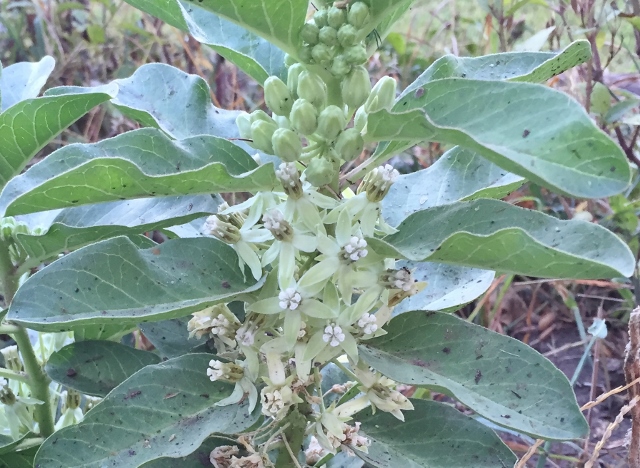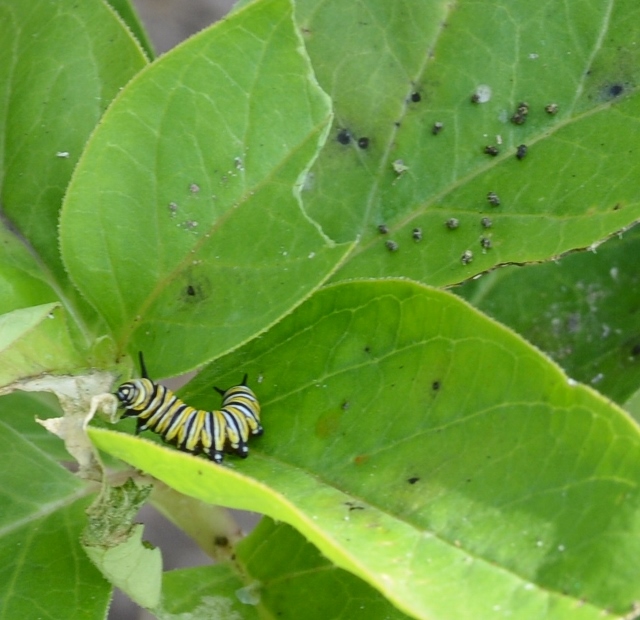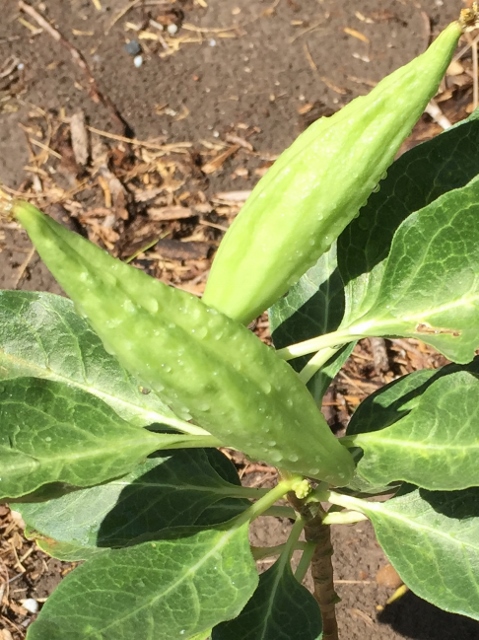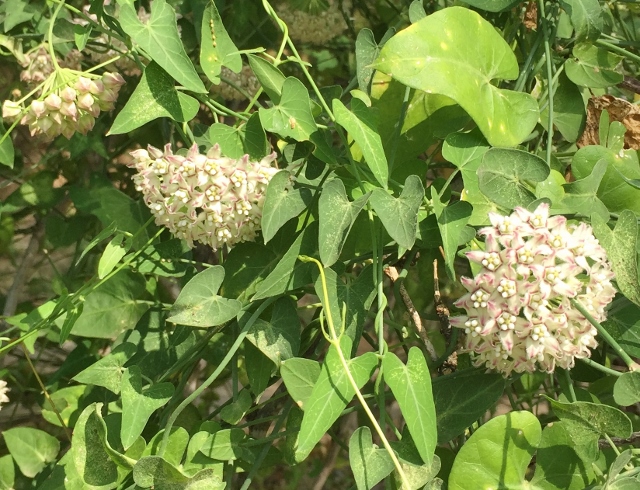Story and photos by Anita Westervelt, Texas Master Naturalist

Earlier this year the National Wildlife Federation issued an open letter to mayors across the nation asking them to help create native habitat in cities in an effort to save the iconic monarch butterfly.
You can jump on the band-wagon at home, too. A small space in your yard can be dedicated to a couple of Valley native milkweed plants that are hosts to monarch butterfly caterpillars.

Prairie milkweed (ziztoes), Asclepias oenotheroides, is an interesting-looking plant. It shoots up a stem with large, thick leaves. Seemingly overnight, green buds appear along the stem and begin opening to show tiny white flowers. Soon, a seedpod or two forms that will reach about three and half inches long. This is when you want to keep a close watch.

When the seeds are ripe, the pod will begin to split open. This is your chance to collect the seeds and store them in a paper sack or cardboard box. If you miss this seed collection opportunity, fluffy white silks like weightless helicopters will float out of the pod, seeds attached, and be gone with the wind.
This natural style of propagation is fine if the seeds float to unmown pastures where they will be left undisturbed to continue the species. If the seeds are collected though, you have a better chance of establishing a colony of native milkweed where you desire and have the opportunity to share seeds with others.
Climbing milkweed, Funastrum cynanchoides. These plants will do exactly as their name implies. Planted near the base of a tree, the vines will wend their way toward the sun without harming the tree. Planted along a fence, they will travel along it and provide easy access for you when it comes to seed collecting time.

The leaves are arrow-head shaped. The flowers form a globe of white flowers with a tinge of green and pink. Left alone, seed pods will form, split open and travel with the wind, winding up who knows where, until the following spring when they begin to grow where they’ve landed.
All milkweed plants secrete a milky substance when a leaf is broken off or stem or vine is snapped.
Another milkweed popular and prevalent in the Valley was introduced from the American tropics. Its colorful orange and yellow blooms are quite attractive. It has a number of names, such as tropical milkweed or Veintiunilla, Asclepias curassavica. There is much controversy about this particular species in North America. It is susceptible to a parasite that is passed to the caterpillars that eat the leaves causing attrition in this noble species that is currently enjoying not only a national but international movement to rescue monarch butterflies from impending extinction.
Native plants require less maintenance once established and attract native beneficial insects. Water in well upon planting and a couple of times a week for about three weeks to establish.
Find native plant growers in the Valley at http://rgvctmn.org/rgv-plants/
For more information about the letter to mayors, type in your search engine: National Wildlife Federation mayors’ pledge.